Anini – Unexplored Gateway to Mishmi Hills and Idu Mishmi Tribe
Puchki curled the hollow bamboo tube around her tiny fingers, place it sloppily close to her aunt’s ear, and blew garbled sounds through it. As the sound echoed the walls of the traditional kitchen, her cherubic laughter floated through the eerie silence of the valley. Puchki – The Idu Mishmi Toddler from Dambeun village , the last Indian Village tucked in the hinterlands of Dri Valley, was unperturbed by two strangers sipping tea at her grandparent’s home.
PIN THE POST FOR LATER
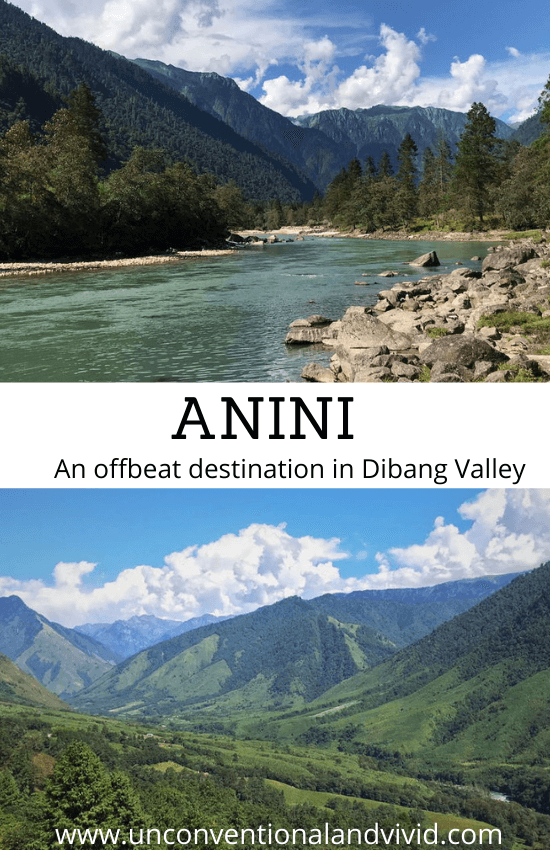
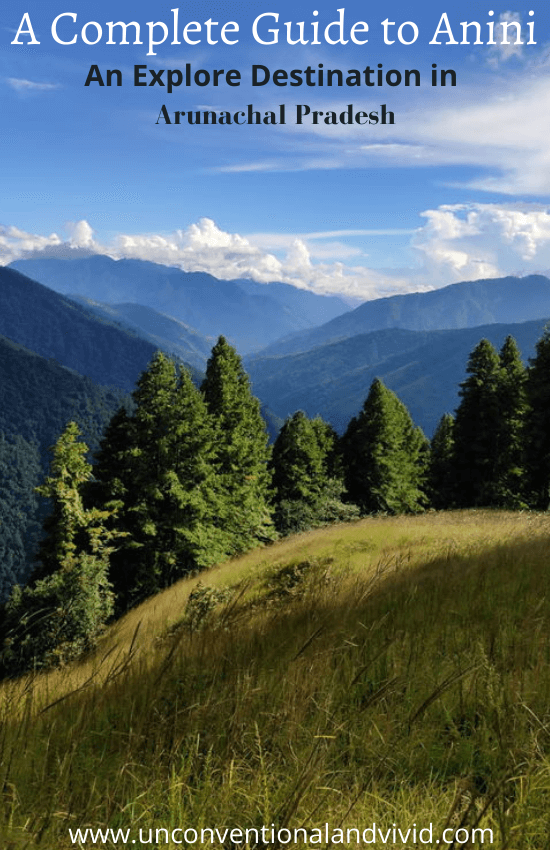
Table of Contents
Anini – The Last Frontier of India
Anini is a slow dream where the territory unfolds into lush green rainforests, serpentine roads, and meandering river tributaries sandwiched between towering Mishmi hills. The untouched and pristine last frontier of Arunachal Pradesh is located in the remote upper Dibang Valley. The quaint town sits as the headquarter of Dibang Valley along the banks of tributaries of Dibang River. Its just been a few years that urbanity of civilization has slowly penetrated into Dibang Valley isolated for years by the boundaries laid by mighty Brahmaputra. The unforgiving roads connecting Roing to Anini huddled through Mayudia Pass, often choked, and blocked with unannounced landslides. Years of isolation has now toppled with new roads being constructed shortening the journey time to reach the last frontier – Anini.
Anini overlooks the Mishmi hills with markets neatly lined with either side of road flanked with wooden doored shops. Bamboo fences and wild flowers in purple, pink, red and white peppered through the town complement the cobalt blue sky. The nip in the hair and the calm breezy sway the bamboo trees. As the sounds of motors and people die down, the eerie silence of night bring in the whooshing wind and a sky full of stars. Tiny villages dot the hills around Anini. Away from the chaos, the dawn lit mornings and balmy evenings, Anini is parallel universe lost in time.
Read more blog from Arunachal Pradesh
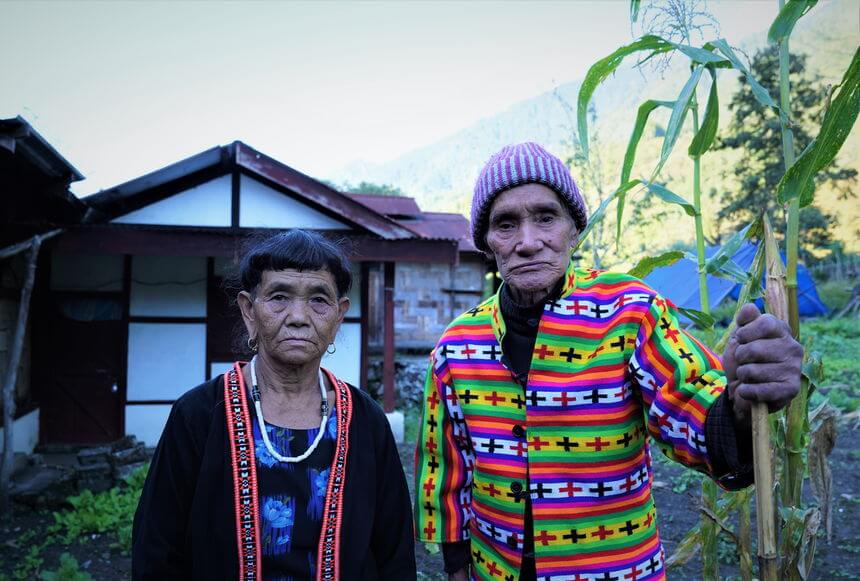
Idu Mishmi Tribe – The Animist Habitants of Mishmi Hills
The modern century is blurrily wrapped in ancient beliefs, culture, and bygone practices in the settlements of Mishmi Hills. The Idu Mishmi tribe is not bound by any religion but continue to practice animism and shamanic rituals. The strong belief in after life and spirit guides unite the tribe together. The traditional practices and ceremonies are performed by local Shaman called “Igu” in native Idu language.
The indigenous people of Anini are descendants of ancestors who knew their way through Mishmi Hills. The reverence for nature and mountain God has transcended through generations with stories from days of yore. The earlier generations were accustomed to hunting practices and spent days in the hinterlands of Mishmi hills in search for Musk Deer, Asiatic beer etc. The hunters had their own area of hunting in the jungle and Rocky Mountains along the high altitude lakes in the Mishmi Hills. With the ancestral hunting practices, the hunters owned mountains, lakes, and large areas passed on the future generations.
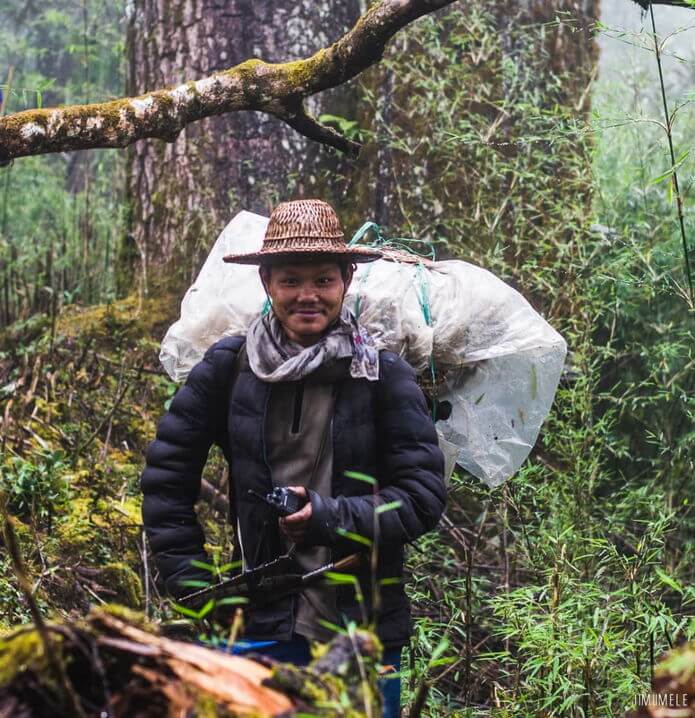
Hunting Rituals and Practices of Idu Mishmi
Hunting was a prevalent practice amongst the Idu Mishmi tribe until few years ago. The expert hunters knew their way through the mountains and took shelter in the caves during their hunting trips. However, with awareness for conservation and dominance of hunting taboos, the younger generations have deviated from the practice and rarely climb the mountains in search of animals. However, the sight of hunting rifles slinged to the back and traditional machete (called Aleche in Idu) in a bamboo case sprung cross-body is not an uncommon sight, with pseudo ban on hunting. Although quite prevalence amongst Idu tribe, hunting followed complex set of rituals and restrictions.
Indigenous traps and snares were used by the Idus for hunting. Aconite poisoned arrows were used for hunting animals by old hunters but it has been majorly replaced with hunting rifles. During my trek to Seven lakes Trek, one of the trekking guide and member of Emudu Seven Lake Trekkers Sanji Mipi showed me aconite plant and its use in traditional hunting. It grows above the snowline in the Rocky Mountains of Mishmi Hills and roots are used for poison extraction. The flesh part hit by the arrow is cut off from the carcass and meat is boiled to release the toxins spread by aconite.
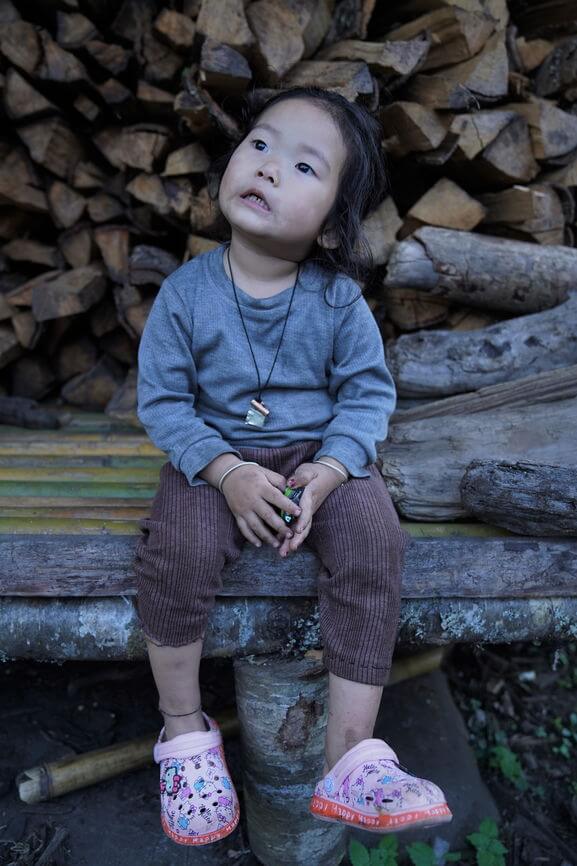
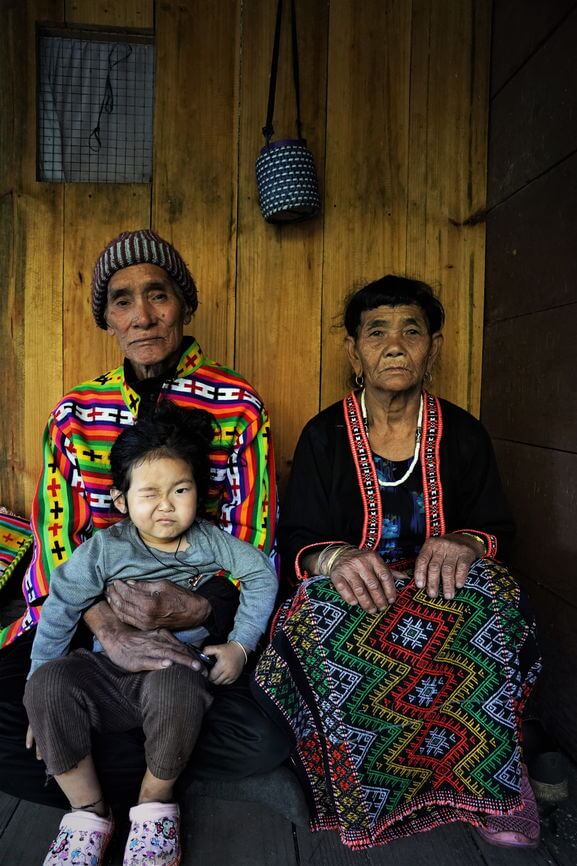
Fear of Deities and Purification Rituals for Idu Mishmi
As animist, Idu Mishmi people believe in deities as guardian of nature and fear the wrath of their anger. People believe mountains are protected by Mountain God called Ngõlõ, forests are protected by deity called Esō ̃ ēpā and waterbodies like rivers or lakes is guarded by Brùù. There are many beliefs that has been passed on from ancestors and one of them is of misū – also known as forbidden, tabooed species.
Lore says the misū species like Mishmi Takin, certain types of snake, frogs or birds are protected by Mountain God Ngõlõ. Killing of a forbidden species which the locals believe are protected by Mountain God is considered to bring bad luck. Hence, accidental killing of such species is followed by purification ceremonies performed by Igu called misū àyũ. Every hunting was followed with ablutions and rituals to purify for the act through ceremonies by local priest – Igu. Rituals even precede hunting expeditions with performance of a ceremony called àbù trù performed by Igu. It is even feared amongst the hunters that saying each other’s name aloud will bring bad luck while in the mountains.
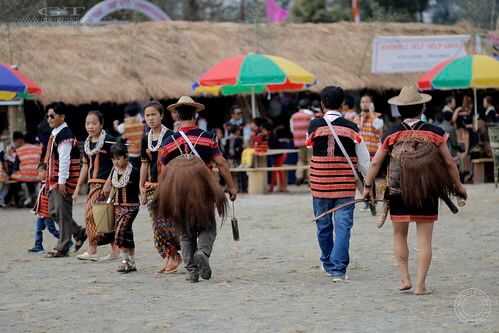
Festivals and Unique Customs of Idu Mishmi Tribe
The festivals started as individual celebration to show power and status in society but slow transgressed in community celebrations. Reh festival is celebrated to appease seek blessing from there supreme creator called Nanyi Inyitaya. It is believed that rituals and ceremonies of sacrificing Mithun or pigs appease the mother creator Nanyi Inyitaya. The ceremonies and feast with family and blood relation is a way to build social bond and strengthen familial ties.
Individual Reh
Reh started as an individual festival that anyone could organize without being it a specific annual festival or ritual. Reh festival is all about organizing a grand feast for family and blood relations, but also beyond. The planning and preparation starts years in advance.
Local System of Ada or Loan
The festival works on a system called as “Ada” which means loan from others for Mithun, Buffaloes, Pigs, Cash etc. A person planning to organize Reh in a few years provide Ada or loan to the current organizer of Reh. The system works on community trust and co-operation. Ada or loan is to be repaid to the person when they organize Reh in a couple of years later This system creates a balance and hence reduce the load of expense. After the ritual of Ada is complete, a tentative date for Reh festival is fixed for a year later.
Knotted String Invitation
The knotted thread or string invitation is an integral part of the culture. It is called Tayi in Idu language which serves as form of local calendar. It is an invitation to family and blood relations to visit on scheduled dates. It is an unusual calendar counted by knot on a string. With every passing night, one knot is cut off and it continue till two knots remain. This is the day kins and relatives arrive at the host’s home for celebration.
Beyond Food and Celebration
The Reh Festival is not only about sacrifices of buffaloes, pigs or Mithun but a status symbol. The organizer of the Reh festival have to also give present to family or wife’s relatives. The higher the number of Mithun or Pigs sacrificed, higher stands the reputation of the person. A man called Ingore Mena is known to have held the highest record of sacrificing 300 Mithun over a span of one week for Reh Festival.
Community Reh
However, the rituals of individual Reh festival is slowly fading. The modern civilization has started to blur the age long practices with traditional Reh organized in mostly remote villages. The culturally rich individual Reh has taken form of pompous community Reh. It is organized by every village for 4 days starting from 2nd Feb annually. It’s a 4-day celebration with locally brewed rice beer, food stalls, and people turn up for the festival draped in their traditional dresses with colorful motifs.
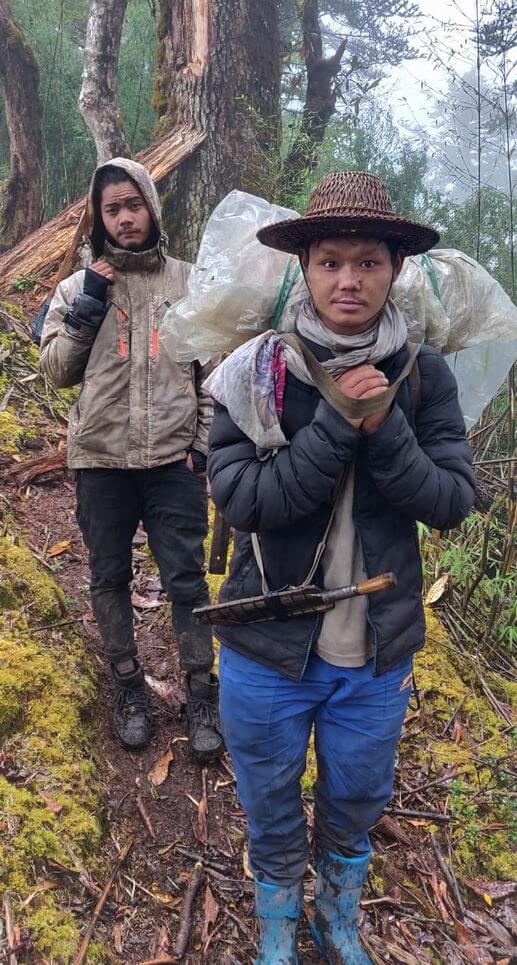
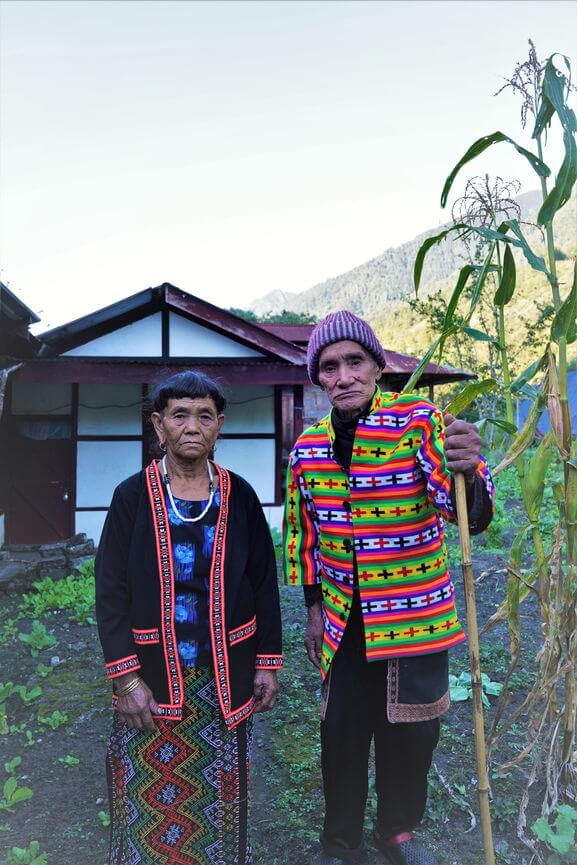
Colorful Motifs, Delectable Indigenous Dishes and More
The colorful motifs and patterns on the ethnic dresses of Idu Mishmi tribe is symbolic with shamanism and animistic practices. The exquisite handloom used for traditional clothing is mostly hand weaved. The intricate designs spread across the shawls, jackets, skirt wraps, and tops. The indigenous clothing is quite vivid weaved for regular to festive wears. The colorful handlooms with + symbol is called Anatobo used for making traditional jackets, bags, and shawls.
The traditional jackets for men with simple design are called Atoma poh and with elaborate or design is called Atoma Zoh. The ethnic jacket for woman is called Atolage. The traditional wear of the women includes a draped wrap skirt weaved in colorful pattern and colors and is called Thoma Zoh. The designs are inspired by nature. The colorful beaded jewels and necklaces complement the traditional dresses.
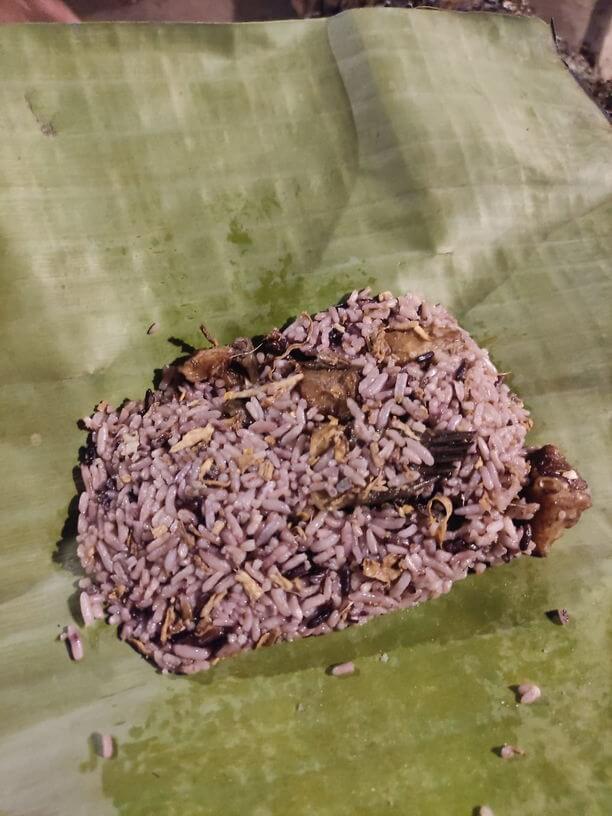
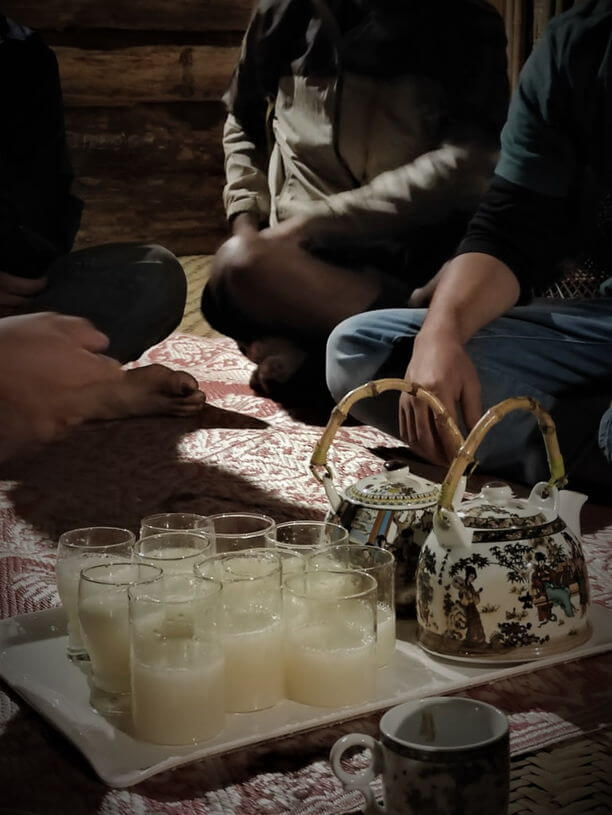
The delectable ethnic dishes are combination of meat, rice, and other local produce. Corn is one of the abundantly found local produce used in many traditional dishes. Ashumbi-hi is a dish made from corn and meat. Another local ethnic dish is Anunu which is local rice cooked with fish or meat along with dry bamboo shoot, mostly served wrapped in banana leaf. Arupe-hi is a chutney made from mix of water, ginger, corn, and chilly and served with bamboo. During special occasions, Phohi is prepared which is cooking of flour and meat in a bamboo case.
Experience and Places to Visit in and Beyond Anini
Anini as a place does not have expect for scenic beauty and the Mishmi hills overlooking the town. It is beyond Anini that the real culture of Idu Mishmi can be seen. If you are in Anini, here are some of the experiences that you must not miss.
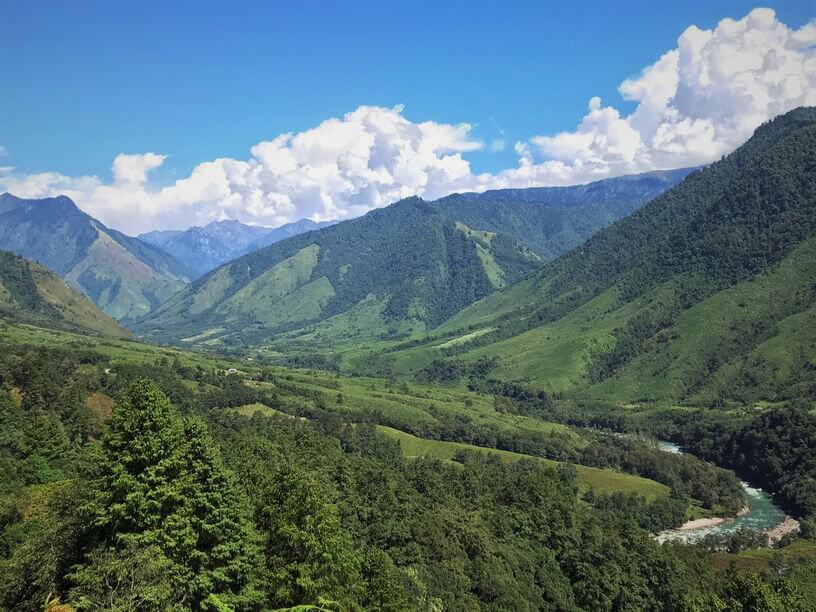
Dambeun – The Last Village in Dri Valley Beyond Anini
Along the newly constructed yet narrow rickety road along the Dri River, Dambeun stands in isolation overlooking the gorgeous mountains. It is the last village of Anini on Dri Valley with 7 homes as settlements. Away from internet, technology, and modern comforts, Dambeun merge with nature in synchrony. Most of the homes are abundant with kitchen garden, seasonal vegetables, and crops. A traditional granary at every home holds produce like rice and corn.
As we wandered around Dambeun aimlessly looking for a sign of human, we met Yine Mili and Puchki (her toddler niece). Yine turned towards us with a smile and invited us to her parents’ home. It was a traditional longhouse made with logwood with a huge kitchen garden in the front. As we walked past the gate, we saw the elderly coupled seated curled up on their wooden porch. Mr. Sele Mili was must around 80+ and his wife Ipili Molo around 75. We sat for a while on the porch before getting invited inside for a cup of tea. The hospitality at Dambeun is a little too much to feed through our urban minds.
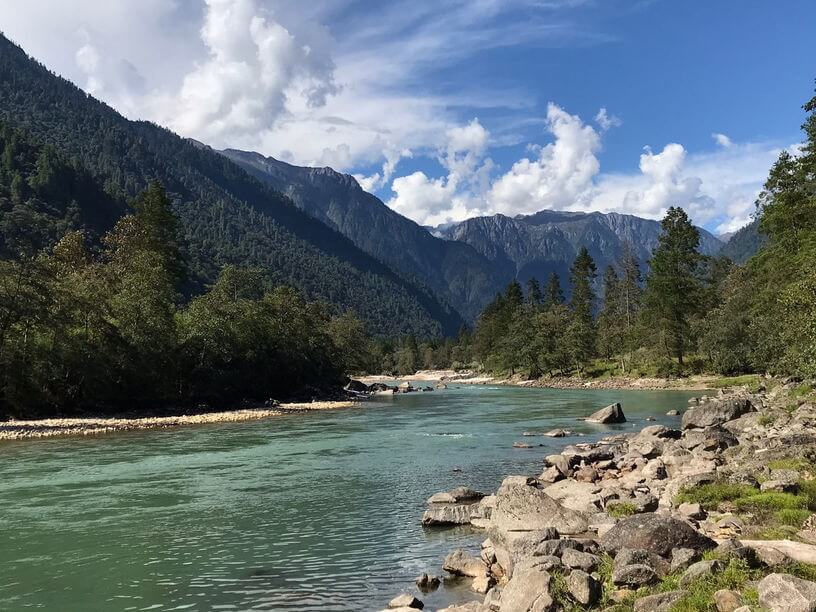
The interior of the longhouse has an unadulterated traditional touch. The hand weaved crisscross bamboo mats are neatly laid on the floor as well as plastered along the walls. Each of the bamboo mats are hand woven by man of the house Mr. Sele Mili. The first room is almost but skulls of hunted animals hung on the walls like prized possession. The traditional Idu Mishmi homes have a large kitchen much akin to all the tribal homes across North East India. The center has a traditional fireplace with a wooden rack made of logwood hung from the roof above the fireplace. The rack is used for drying meat and other food items leaving a smoky flavor in the food.
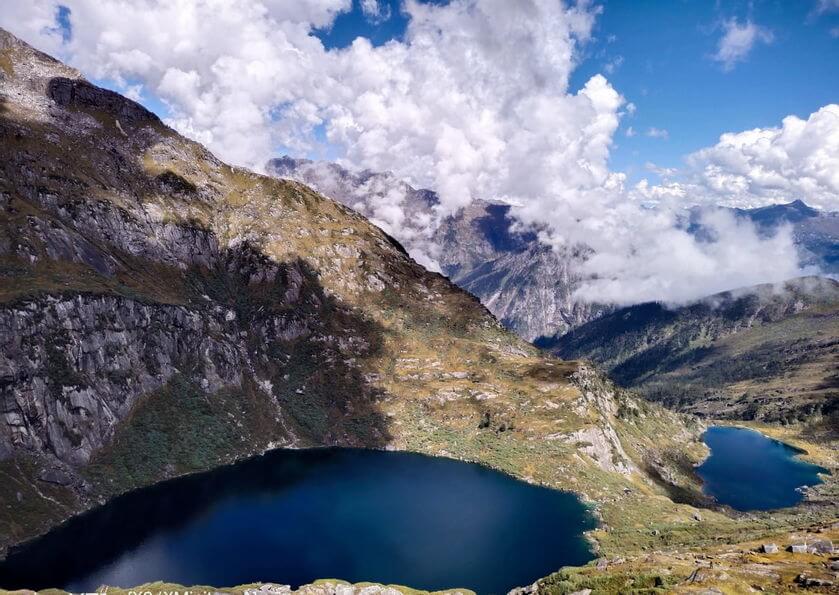
Seven lakes Trek
This is the most surreal yet adventurous experience in Anini spread across 8 days of trekking through grasslands, rainforest, and Rocky Mountains. The turquoise blue alpine lakes and the gorgeous Mishmi hills along with the entirety of the journey makes it an unforgettable experience. Well, let me save Seven Lakes Trek for a full blog coming up next.
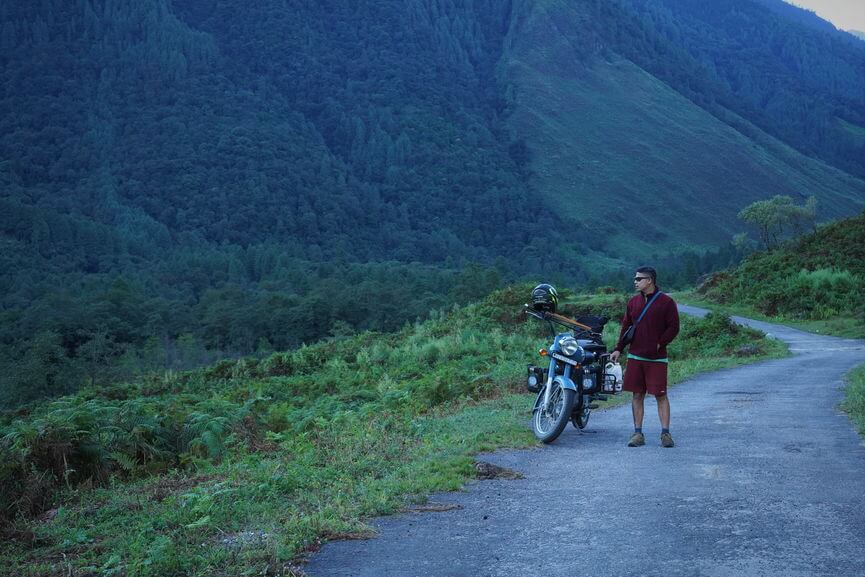
Visit Mipi Village
The enchanting hills of Mishmi hills float across Mipi village as the first rays of sun slowly spread and cut through the longhouses. The sight of Mipi village from up above while trekking Seven Lakes was quite inviting. The heart of the village holds a number of stories about Idu Mishmi culture, rituals of hunting, and traditional. Plan a day visit to Mipi, witness some of the traditional hunting artefacts, and listen to interesting tales from people.

How to Reach Anini?
A few years back reaching Anini was a nightmare with treacherous roads, landslides, and blockages. However, now it has become far more convenient to travel to Anini. Here are some options to reach Anini:
- The nearest airport is Dibrugarh from which one can take a bus or tax to Roing and onwards to Anini.
- There are direct overnight bus from Guwahati to Roing. Next option is either take a train or bus to Dibrugarh and take bus to Roing. There are shared cabs that leave early morning from Roing to Anini but make sure to book a day before. The cost for shared cab is Rs 1000/- per person.
Where to Stay in Anini?
Anini is a small town and the accommodation is limited. However, for an authentic and homely experience of Idu Mishmi culture, I highly recommend stay at Mishmi Takin Homestay. You can contact Timai Miwu for booking at 9402974284. The cost is quite affordable at Rs 1000/person and Rs 500/per person for the dorm.
FOUND THE POST INTERESTING! PIN THE POST
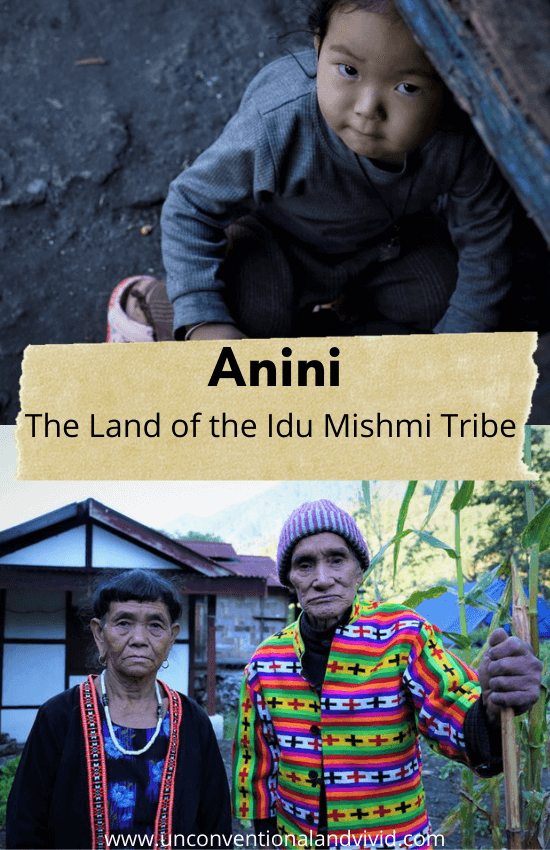
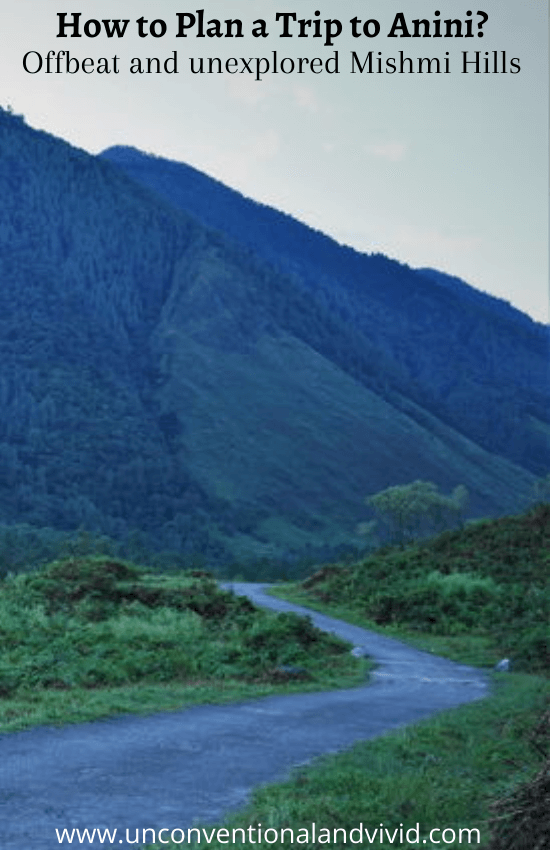

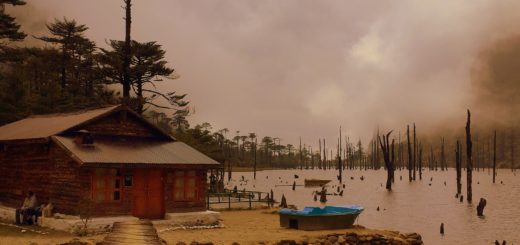
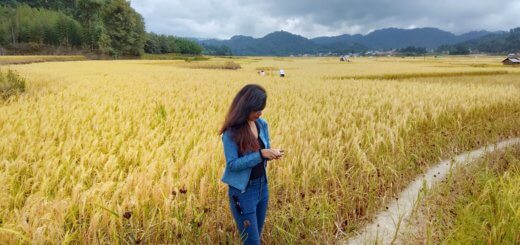
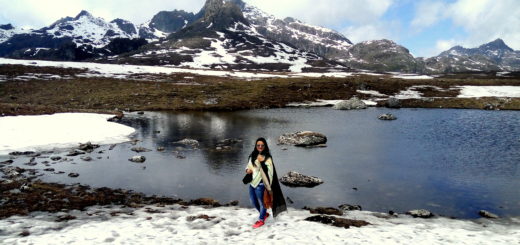

Borhiya lekhisa, Upasana 🙂 Loved how detailed and diversely your wrote about the culture and their belief systems. Definitely jaabo laagibo, and am sure to ask you for more tips when I plan to travel there 🙂
Thank you so much! There is is much to know and the rituals and cultural practices are quite interesting. Do plan a trip, you will love it 🙂